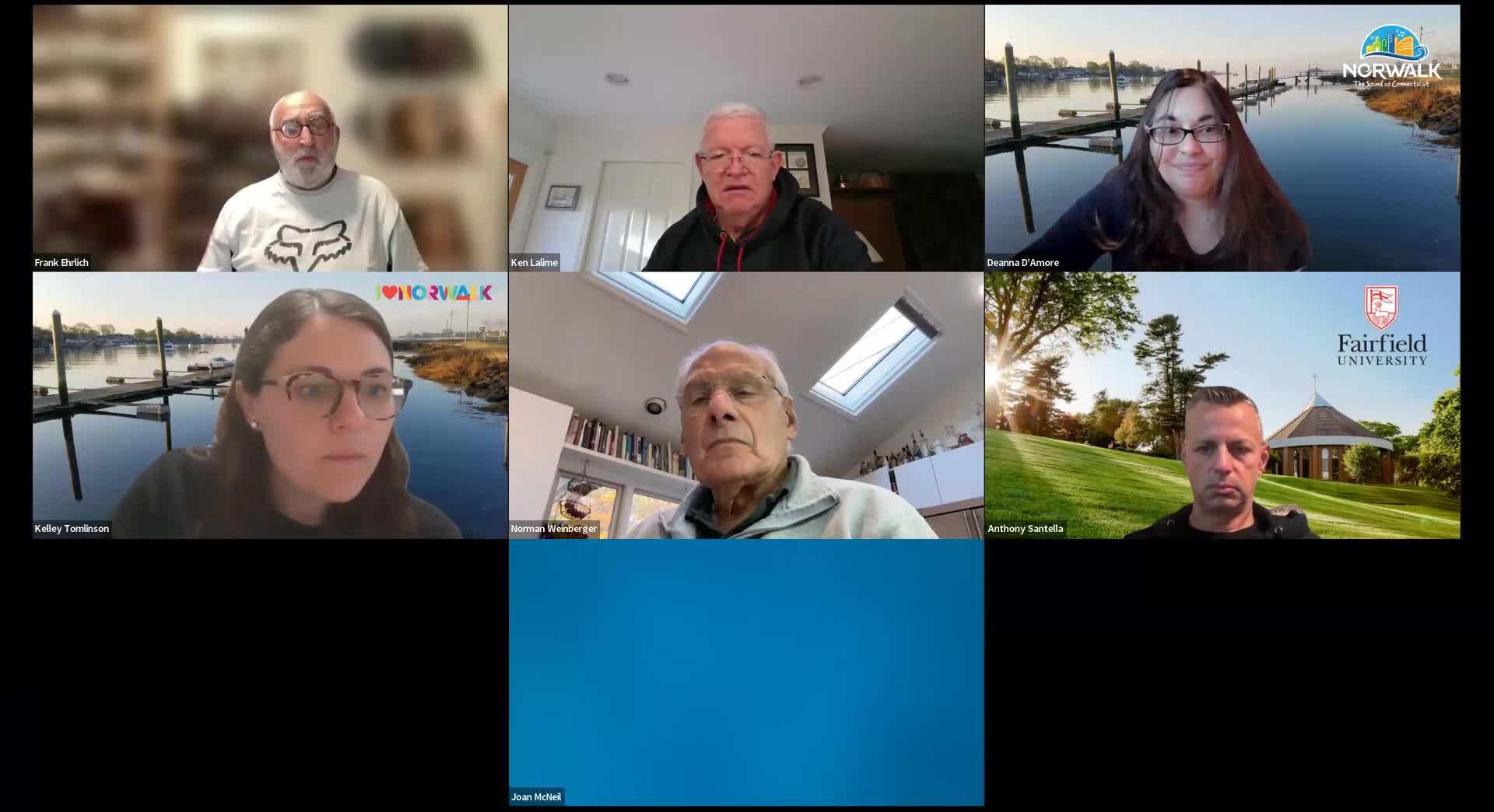Norwalk continues public-health suicide-prevention work; grant extended, trainings and postvention materials expanded
October 28, 2025 | Norwalk City, Fairfield, Connecticut
This article was created by AI summarizing key points discussed. AI makes mistakes, so for full details and context, please refer to the video of the full meeting. Please report any errors so we can fix them. Report an error »

Kelly Tomlinson, presenting the city's public health approach to suicide prevention grant work, reminded the board that Norwalk received the grant in 2023 and that funding became available in July 2023. She said the grant was extended for another year and the department continues work on partnerships, inventories and training.
Tomlinson said the department partnered with a range of organizations and added new partners this year; examples included working with CT State to run "fresh check" days and placing 988 lifeline signage in parking garages with Sono Collection and the parking authority. As part of an inventory and gap analysis done with Yukon, the department documented approximately 10 partners and identified strengths in training availability and postvention supports while noting gaps in upstream prevention activities and referrals to peer-led support groups.
Tomlinson summarized training metrics: three ASSIST trainings reaching 51 clinicians; 29 QPR trainings with 499 participants; six Counseling on Access to Lethal Means trainings with 216 participants; and a 0 Suicide systems workshop attended by nine health care organizations with 23 participants covering a range of clinical and operational roles. She also said department postvention materials (resource guides, consent forms, needs assessments) were translated into Spanish and that short reference guides were developed for rapid referral after a death.
On mandatory reporting, board member Frank Ehrlich asked why suspected suicide risk is not mandatorily reportable as child abuse is. Tomlinson responded that screening and reporting practices differ across provider settings and that the grant work aims to increase standardized screening and seamless transitions to care rather than create a new mandatory reporting requirement at the local level.
Tomlinson said the department continues to use surveillance data (emergency-department visits, VDRS data and youth surveys) to track trends and to inform programming for higher-risk groups such as LGBTQ youth, veterans and postpartum women. Outreach and signage efforts for 988 were highlighted, including station and parking garage placements and bilingual materials.
Tomlinson said the department partnered with a range of organizations and added new partners this year; examples included working with CT State to run "fresh check" days and placing 988 lifeline signage in parking garages with Sono Collection and the parking authority. As part of an inventory and gap analysis done with Yukon, the department documented approximately 10 partners and identified strengths in training availability and postvention supports while noting gaps in upstream prevention activities and referrals to peer-led support groups.
Tomlinson summarized training metrics: three ASSIST trainings reaching 51 clinicians; 29 QPR trainings with 499 participants; six Counseling on Access to Lethal Means trainings with 216 participants; and a 0 Suicide systems workshop attended by nine health care organizations with 23 participants covering a range of clinical and operational roles. She also said department postvention materials (resource guides, consent forms, needs assessments) were translated into Spanish and that short reference guides were developed for rapid referral after a death.
On mandatory reporting, board member Frank Ehrlich asked why suspected suicide risk is not mandatorily reportable as child abuse is. Tomlinson responded that screening and reporting practices differ across provider settings and that the grant work aims to increase standardized screening and seamless transitions to care rather than create a new mandatory reporting requirement at the local level.
Tomlinson said the department continues to use surveillance data (emergency-department visits, VDRS data and youth surveys) to track trends and to inform programming for higher-risk groups such as LGBTQ youth, veterans and postpartum women. Outreach and signage efforts for 988 were highlighted, including station and parking garage placements and bilingual materials.
View full meeting
This article is based on a recent meeting—watch the full video and explore the complete transcript for deeper insights into the discussion.
View full meeting
